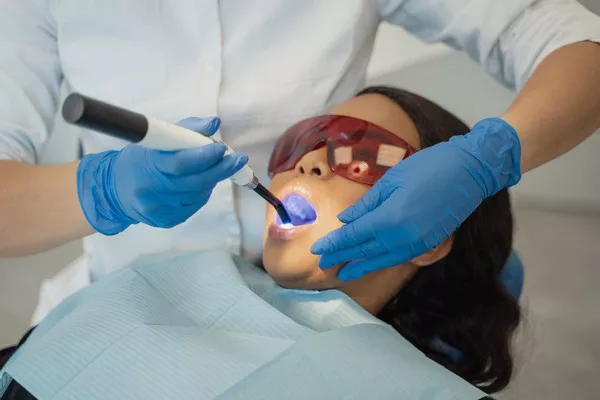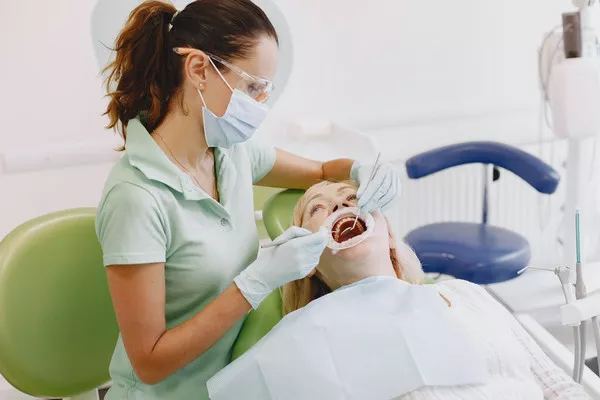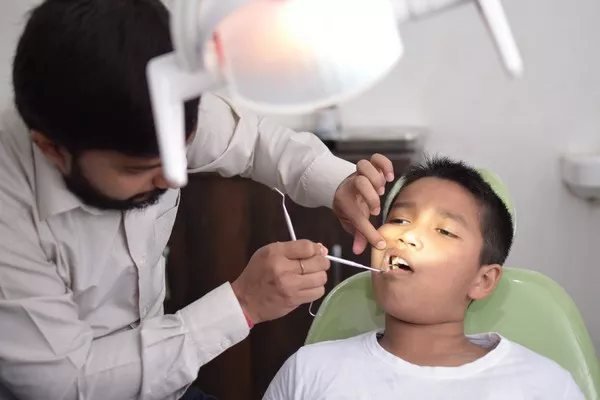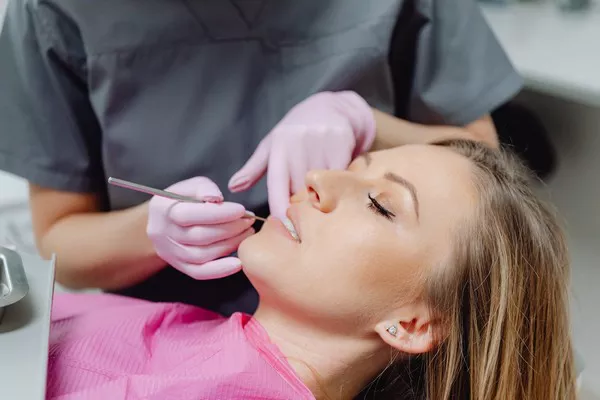LED teeth whitening has become a popular method for achieving a brighter smile, thanks to its convenience and effectiveness. However, many people still have questions about how it works, its safety, and its overall effectiveness compared to other whitening methods. This article delves into the science behind LED teeth whitening, its benefits, potential drawbacks, and important considerations for those thinking about undergoing the procedure.
Definition and Mechanism
LED teeth whitening is a cosmetic dental procedure that uses a combination of a whitening agent, typically containing hydrogen peroxide or carbamide peroxide, and an LED (light-emitting diode) light to enhance the whitening process. The whitening agent breaks down the stains on the enamel and dentin of the teeth, while the LED light accelerates this process by activating the peroxide molecules, allowing them to penetrate the teeth more effectively and remove deeper stains.
How it Works
Application of Whitening Agent: The process begins with the application of the whitening gel, which contains the peroxide-based compound. This gel is carefully applied to the surface of the teeth.
Activation with LED Light: Once the gel is applied, an LED light is directed at the teeth. The light’s wavelength is specifically tuned to activate the peroxide in the gel, which helps to speed up the breakdown of stains and discoloration.
Breaking Down Stains: The activated peroxide molecules penetrate the enamel and dentin layers of the teeth, breaking down the molecular bonds of the stains. This process results in a visible whitening effect.
LED lights are preferred in this process because they do not generate as much heat as other types of lights (such as UV lights), making them safer and more comfortable for the patient.
Effectiveness
The effectiveness of LED teeth whitening can vary significantly based on individual factors such as the initial condition of the teeth, the type and extent of staining, and adherence to the treatment protocol. Several studies and expert opinions provide insights into how well this method works.
Clinical Studies and Expert Opinions
Clinical Studies: Research has shown that LED teeth whitening can produce noticeable results in a relatively short period. For instance, a study published in the Journal of Esthetic and Restorative Dentistry found that patients who underwent LED-assisted whitening treatments showed significant improvements in tooth color compared to those who used a whitening gel alone.
Expert Opinions: Dental professionals generally agree that LED teeth whitening is an effective method for reducing stains and achieving a brighter smile. According to Dr. William Graves, a cosmetic dentist, “LED teeth whitening can be highly effective, particularly when combined with professional-grade whitening gels. It offers a quick and noticeable improvement in tooth color.”
Individual Variability
It’s important to note that results can vary. Factors that influence effectiveness include:
Initial Tooth Color: People with yellowish teeth tend to see more dramatic results compared to those with grayish or brownish stains.
Type of Stains: Extrinsic stains (caused by food, drinks, and smoking) are typically easier to remove than intrinsic stains (caused by aging, medication, or trauma).
Treatment Adherence: Following the recommended treatment protocol, including maintenance and follow-up care, can enhance results.
Safety
Safety is a major concern for many considering any dental procedure. Current research and expert consensus suggest that LED teeth whitening is safe when used correctly.
Research on Safety
Studies have consistently shown that LED teeth whitening, when performed according to manufacturer’s instructions, does not pose significant risks to dental health. For example, a review in the Journal of Dentistry concluded that LED whitening treatments are safe and do not cause long-term damage to the teeth or gums.
Manufacturer’s Protocols
Following the manufacturer’s guidelines is crucial for ensuring safety. These protocols typically include:
Proper Application: Ensuring the whitening gel is applied evenly and avoiding contact with the gums and soft tissues.
Controlled Light Exposure: Limiting the duration of LED light exposure to prevent any potential thermal effects.
Use of Protective Gear: Wearing protective eyewear and using barriers to protect the gums during in-office treatments.
Pros and Cons
Pros of LED Teeth Whitening
Quick Results: LED teeth whitening can deliver noticeable results in a single session, making it ideal for those seeking immediate improvement.
Enhanced Whitening:The LED Light accelerates the activation of the whitening agent, leading to more effective stain removal.
Convenience: Both in-office and at-home options are available, providing flexibility for different preferences and schedules.
Minimal Heat Generation: Unlike UV lights, LEDs do not produce significant heat, reducing the risk of sensitivity and discomfort.
Professional Supervision: In-office treatments are performed under the supervision of dental professionals, ensuring safety and efficacy.
Cons of LED Teeth Whitening
Cost: Professional LED teeth whitening can be more expensive than over-the-counter options and other home-based treatments.
Maintenance: Results are not permanent, and maintenance treatments are required to sustain the whitening effect.
Potential Sensitivity: Some individuals may experience temporary tooth sensitivity or gum irritation following treatment.
Variable Results: Effectiveness can vary based on individual factors such as the nature of the stains and the initial color of the teeth.
Procedure
The procedure for LED teeth whitening can differ slightly between at-home and in-office treatments, but the core steps remain similar.
In-Office LED Teeth Whitening
Initial Consultation: The dentist assesses the patient’s teeth and discusses their whitening goals.
Preparation: The teeth are cleaned to remove plaque and debris. Protective measures such as applying a barrier gel to the gums and giving the patient protective eyewear are taken.
Application of Whitening Gel: The whitening gel is carefully applied to the teeth.
Activation with LED Light: The LED light is positioned to shine on the teeth for a specified period, usually 15-30 minutes per session. This process may be repeated several times in one visit.
Post-Treatment Care: After the final light application, the gel is removed, and the teeth are rinsed. The dentist provides post-treatment instructions, which may include avoiding certain foods and drinks that can stain the teeth.
At-Home LED Teeth Whitening
Selection of Kit: The patient selects an at-home whitening kit, which includes a whitening gel and an LED light device.
Preparation: The teeth are brushed and flossed before applying the whitening gel.
Application of Whitening Gel: The gel is applied to the teeth, often using a tray or a brush.
Activation with LED Light: The LED light device is used according to the kit’s instructions, typically for a specified duration each day.
Completion: After the treatment, the mouth is rinsed, and the teeth are cleaned to remove any residual gel.
Side Effects
While LED teeth whitening is generally safe, some individuals may experience side effects. The most common are tooth sensitivity and gum irritation.
Tooth Sensitivity
Causes: Sensitivity occurs when the peroxide in the whitening gel penetrates the enamel and reaches the dentin layer, affecting the nerve endings.
Mitigation:
- Use Desensitizing Gel: Applying a desensitizing gel before or after treatment can help reduce sensitivity.
- Shorter Treatment Duration: Reducing the exposure time to the whitening gel can minimize sensitivity.
- Use of Fluoride: Incorporating fluoride treatments can strengthen the enamel and reduce sensitivity.
Gum Irritation
Causes: Irritation can occur if the whitening gel comes into contact with the gums or soft tissues.
Mitigation:
- Proper Application: Ensuring the gel is applied only to the teeth and avoiding the gums.
- Barrier Protection: Using protective barriers during in-office treatments to shield the gums.
- Adjusting the Gel Concentration: Opting for a lower concentration of whitening gel can reduce the risk of irritation.
Recommendations
LED teeth whitening can be a suitable option for many people, but it’s important to consider individual circumstances and seek professional advice.
Who Should Consider LED Teeth Whitening
Individuals with Extrinsic Stains: Those with stains caused by food, beverages, or smoking can benefit the most from LED teeth whitening.
People Seeking Quick Results: Individuals looking for immediate improvement in their tooth color, such as before a special event, will find LED whitening effective.
Those with Healthy Teeth and Gums: Ideal candidates are those without significant dental issues, such as untreated cavities or gum disease.
Consultation with a Dental Professional
Before starting LED teeth whitening, it’s essential to consult with a dentist. They can:
Evaluate Suitability: Assess whether LED whitening is appropriate based on the individual’s dental health and the type of stains.
Recommend Alternatives: Suggest other whitening methods if LED whitening is not suitable.
Provide Professional Supervision: Ensure the treatment is performed safely and effectively.
Conclusion
LED teeth whitening is a modern and effective method for achieving a brighter smile. While it offers numerous advantages, such as quick results and enhanced whitening, it’s important to be aware of potential side effects and the need for maintenance treatments. Consulting with a dental professional can help determine if this treatment is the right choice and ensure it is carried out safely.
FAQs About Teeth Whitening with Light
1. Do teeth whitening lights actually work?
Teeth whitening lights, particularly those using LED technology, can enhance the effectiveness of whitening treatments by accelerating the activation of whitening agents like hydrogen peroxide or carbamide peroxide. These lights work by stimulating the molecules in the whitening gel, allowing them to penetrate the teeth more effectively and break down stains. While they can contribute to achieving a brighter smile, their effectiveness may vary depending on individual factors such as the severity of staining and the adherence to the treatment protocol.
2. Does blue light actually whiten teeth?
Blue light is commonly used in teeth whitening procedures because it has been found to activate certain whitening agents, such as hydrogen peroxide, more efficiently. When combined with a whitening gel containing these agents, blue light can help accelerate the whitening process by breaking down stains and discoloration on the surface of the teeth. However, it’s important to note that blue light alone does not whiten teeth; it needs to be used in conjunction with a whitening agent for optimal results.
3. How long does teeth whitening with light last?
The duration of teeth whitening results achieved with light-based treatments can vary depending on several factors, including the individual’s oral hygiene habits, dietary choices, and lifestyle factors. In general, teeth whitening treatments, whether performed in-office or at home with light, are not permanent. However, with proper maintenance and regular touch-up treatments, results can last for several months to a few years. It’s important to follow post-treatment instructions provided by dental professionals and avoid habits that can contribute to staining, such as smoking or consuming dark-colored foods and beverages.
4. Does UV light do anything for teeth whitening?
UV light has been used in the past for teeth whitening procedures; however, its use has declined due to safety concerns and the availability of safer alternatives such as LED lights. UV light can potentially cause damage to the soft tissues in the mouth and increase the risk of tooth sensitivity. Additionally, UV light may not be as effective as other light sources, such as blue LED light, in activating whitening agents. As a result, most modern teeth whitening treatments utilize LED lights, which are safer and more efficient in enhancing the whitening process.
You Might Be Interested In






























